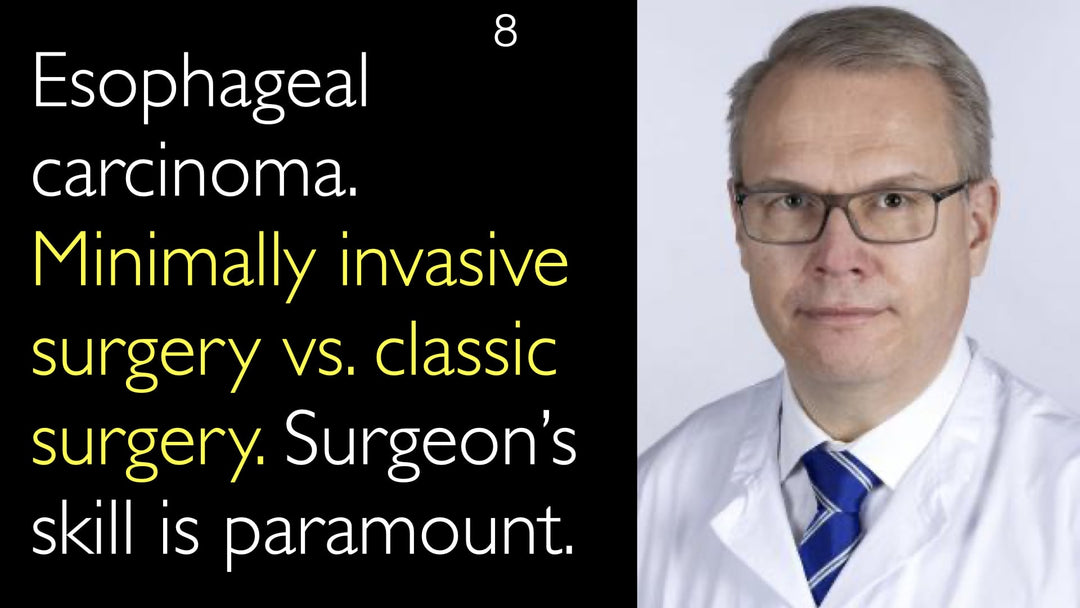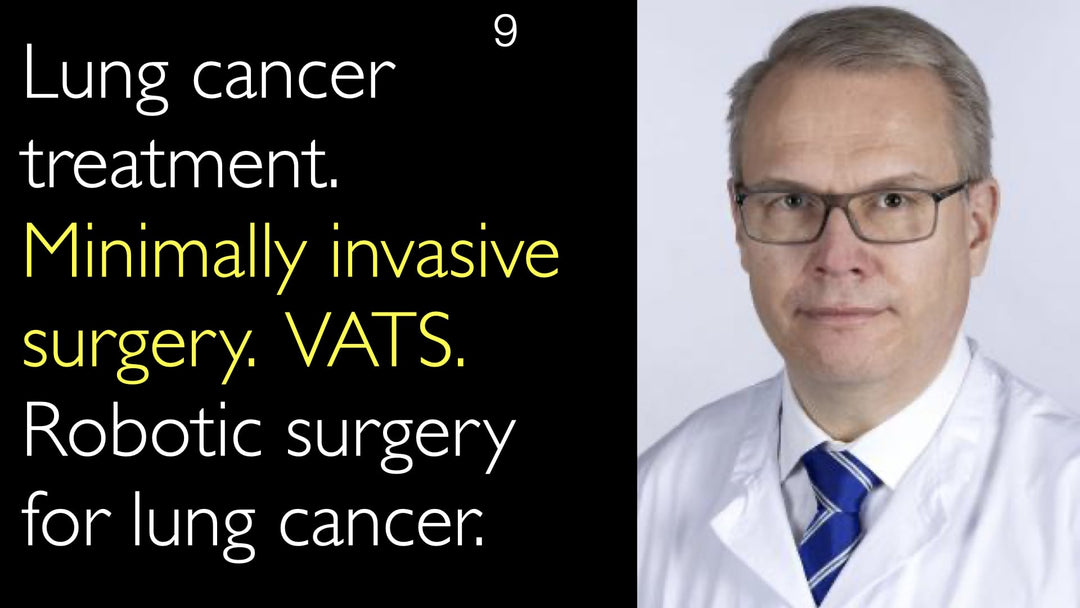최소 침습 신경외과 분야의 선도적 전문가인 Philip Theodosopoulos 박사(MD)가 내시경 두개저 종양 치료의 발전 과정을 설명합니다. 그는 새로운 기술이 어떻게 외부 절개 없이 코를 통해 깊은 뇌종양에 접근할 수 있게 하는지 상세히 논의합니다. 이 접근법은 뇌 견인과 수술적 이환율을 줄이는 것을 목표로 합니다. Philip Theodosopoulos 박사(MD)는 복잡한 뇌종양 수술에서 혁신과 입증된 효과성 사이의 균형에 대해 논의합니다.
두개저 뇌종양에 대한 첨단 최소 침습 내시경 수술
섹션 바로가기
두개저 수술의 어려움
필립 테오도소풀로스(Philip Theodosopoulos) 박사(MD)는 두개저 신경외과 수술의 독특한 어려움을 강조합니다. 뇌와 그 중요한 혈관 구조물들은 움직일 수 없는 두개골 내부에 밀집되어 있습니다. 깊은 중앙부 종양에 대한 전통적 개방 수술법은 종종 상당한 뇌 견인이 필요합니다. 이 견인은 뇌 조직 손상이라는 높은 대가를 치를 수 있습니다.
과거 외과의들은 이러한 병변에 접근하기 위해 대량의 두개저 골조직과 하부 연조직을 제거해야 했습니다. 테오도소풀로스 박사는 이러한 광범위한 기술들이 여전히 많은 복잡한 종양에 대해 최선의 표준 치료법(gold standard)으로 남아 있음을 확인합니다. 주된 목표는 항상 절개 크기를 최소화하는 것이 아닌 종양의 완전한 제거입니다.
방사선수술의 치료 영향
방사선수술의 발전은 두개저 수술을 덜 침습적으로 만드는 주요 동인이 되었습니다. 감마나이프(Gamma Knife)와 같은 기술은 정밀하고 컴퓨터로 제어되는 방사선 조사선을 제공합니다. 이를 통해 의사들은 어떠한 절개도 없이 특정 뇌종양을 효과적으로 치료할 수 있습니다.
필립 테오도소풀로스 박사(MD)는 이것이 패러다임의 전환을 가져왔다고 지적합니다. 이 분야는 크고 외형을 손상시키는 수술에서 비침습적 대안으로 이동했습니다. 이러한 발전은 신경외과 의사들로 하여금 자신들의 수술 절차를 어떻게 더 최소 침습적으로 수행하여 관련성을 유지할 수 있을지 재고하도록 만들었습니다.
비강 내시경 접근법
현대의 두개저 최소 침습 신경외과 수술은 종종 "무절개" 시술입니다. 외과의들은 코와 자연적인 부비동을 통해 뇌의 가장 깊은 부분에 접근합니다. 이 접근법은 얼굴이나 머리에 외부 절개를 전혀 하지 않고 두개저 자체에서 두개골 내로 진입합니다.
필립 테오도소풀로스 박사(MD)는 이 방법이 현미경 대신 내시경을 활용한다고 설명합니다. 이러한 긴 망원경은 수술 부위의 파노라마식 깊은 내부 시야를 제공합니다. 외과의들은 그런 다음 뼈를 드릴링하고 제거하여 두개골 중심부에 도달할 수 있어, 접근법과 관련된 이환율을 극적으로 줄입니다.
신기술 및 도구
내시경적 통로로의 전환은 완전히 새로운 전문 도구 세트를 요구합니다. 이러한 새로운 경로는 작고 좁으며 효과적이지만 독특한 도전 과제를 제시합니다. 외과의들은 시작 지점에서 15~20cm 떨어진 곳에서 수술을 수행해야 하므로, 고급 기술과 도구가 필요합니다.
필립 테오도소풀로스 박사(MD)는 기술이 전체적인 해결책의 일부에 불과하다고 강조합니다. 진정한 도전은 이러한 도구를 안전하고 효과적으로 사용할 수 있는 전문성을 개발하는 것입니다. 이 새로운 기술은 건강한 뇌 구조물에 대한 부수적 손상을 최소화하면서 종양에 대한 더 나은 접근을 제공하는 것을 목표로 합니다.
치료 적응증 정의
현대 신경외과에서 중요한 질문은 어떤 종양이 내시경 기술에 가장 적합한지를 결정하는 것입니다. 최첨단 동향은 이러한 최소 침습 접근법의 진정한 적응증을 정의하는 것을 포함합니다. 연구는 이러한 방법이 기존 수술과 동등한 종양 제거 효과를 제공하는지에 초점을 맞추고 있습니다.
테오도소풀로스 박사는 덜 침습적인 수술이 직관적으로 더 나아 보이지만, 항상 그런 것은 아니라고 지적합니다. 이 분야는 이점과 위험 사이의 경계가 어디인지를 확립하기 위해 활발히 노력하고 있습니다. 목표는 덜 침습적인 접근법이 환자를 치료한다는 주된 목표를 훼손하지 않도록 보장하는 것입니다.
수술 접근법 비교
최소 침습 수술은 내시경 방법에 국한되지 않습니다. 테오도소풀로스 박사는 개두술(open cranial surgery) 또한 덜 침습적으로 진화했다고 설명합니다. 외과의들은 이제 눈썹 부위와 같이 더 작은 절개를 통해, 과거보다 훨씬 작은 머리 개구부를 만듭니다.
이러한 정교화된 개방 기술은 순수 내시경 접근법에 대한 중요한 대안 역할을 합니다. 내시경 시술과 최소 침습 개두술(minimally invasive open craniotomy) 사이의 결정은 복잡합니다. 안톤 티토프(Anton Titov) 박사(MD)와 필립 테오도소풀로스(Philip Theodosopoulos) 박사(MD) 모두 최선의 접근법은 특정 종양과 환자의 해부학적 구조에 맞게 조정되는 것에 동의합니다.
전체 전문
안톤 티토프 박사(MD): 최소 침습 기술은 다양한 세부 전문 분야의 현대 수술에서 매우 강력한 추세입니다. 내시경 및 최소 침습 신경외과 수술 또한 귀하의 주요 관심 분야 중 하나입니다.
저는 보스턴에서 심장외과 교수인 로렌스 콘(Lawrence Cohn) 박사와 매우 흥미로운 논의를 가졌습니다. 우리는 심장외과에서의 최소 침습 기술과 최소 침습 수술에 초점을 맞춘 심장외과의 동향에 대해 논의했습니다.
신경외과 수술은 매우 제한된 공간에서 이루어집니다. 뇌와 그 주변 혈관 구조물 및 지지 구조물들은 두개골 내부에 밀집되어 있습니다. 따라서 최소 침습 기술을 신경외과 수술에 적용하는 것은 매우 어렵지만, 동시에 매우 필요합니다.
신경외과 수술에서 귀하가 최소 침습 수술 및 내시경 기술을 적용하는 몇 가지 예와 그 결과에 대해 말씀해 주시겠습니까?
필립 테오도소풀로스 박사(MD): 저는 귀하의 의견에 전적으로 동의합니다. 이것은 오랫동안 현대 수술의 추세였습니다. 사실, 일반적으로 수술 전반의 추세였습니다. 이는 현대 수술에서뿐만 아니라, 특히 지난 10년 동안의 추세입니다.
신경외과에서는 최소 침습 치료법에 조금 늦게 진입했습니다. 부분적인 이유는 정확히 귀하가 말씀하신 대기 때문입니다. 두개골은 제한된 공간입니다. 우리는 이미 상대적으로 작은 수술 부위 개구부를 가지고 있습니다. 우리의 가장 큰 개구부조차도 신체의 다른 부위에서 하는 어떤 절개와 비교해도 작습니다.
더 작은 접근법과 더 작은 절개를 사용하는 근거는 자연스럽게 다른 어떤 해부학적 부위의 근거와도 매우 일관됩니다. 비록 뇌종양 대수술에서 환자가 겪는 증상들이 신체 다른 부위의 다른 접근법에서 오는 증상과 정확히 같지는 않지만요.
심장외과와 복부외과는 크고 긴 절개를 하는 대신 작은 절개와 내시경 포트를 통해 개선점을 누리는데, 이는 주로 수술 후 통증이 덜하기 때문입니다, 그 이상도 이하도 아닙니다. 하지만 뇌에서는 그것보다 훨씬 더 많은 것입니다.
뇌에서, 특히 두개저를 따라, 최소 침습 수술 방법은 다릅니다. 두개저에 도달하는 것은 매우 어렵습니다. 두개저에 대해 생각할 때, 양측 사이의 중간점을 놓는다면, 그것이 바로 두개저의 실제 중심부입니다.
두개저는 매우 깊습니다. 이는 많은 뇌와 중요한 뇌 구조물들 아래에 위치합니다. 그것들은 움직일 수 없습니다. 일부 뇌 구조물들은 뇌 손상이라는 대가를 치르면 움직일 수 있습니다.
두개골 중심부에 있는 이러한 병변에 접근할 때, 우리는 많은 뇌 조직을 파괴하게 됩니다. 우리는 뇌를 견인하는 것을 피할 수 있습니다, 움직이면 뇌 손상의 대가를 치르게 될 뇌 구조물들을 견인하는 것을요. 그래서 우리는 두개저의 실제 골성 기저부를 많이 파괴합니다.
우리는 두개저 하부에 있는 많은 연조직들을 파괴합니다. 때로는 이러한 장소에 실제로 도달하기 위해 뇌에도 손상을 줍니다. 자, 이러한 기술들은 여전히 최선의 표준 치료법으로 남아 있습니다. 이는 '귀여워 보이는 것'이 아닙니다. 종양을 제거하는 것에 관한 것이기 때문입니다.
뇌종양 수술을 하는 것은 쉽지 않습니다. 반쯤 하는 것은 정말로 할 수 없습니다. 뇌종양 수술 부위에 충분한 노출이 있어야 합니다. 하지만 최소 침습 내시경 뇌종양 치료라는 아이디어가 생겼습니다.
우리 두개저 수술 분야는 이 지점에 도달했습니다. 우리는 뇌종양에 도달하기 위해 두개저 전역에 걸쳐 발생시키는 이환율을 최대화했습니다. 그리고 그것은 좋지 않았습니다. 비록 우리가 종양 바로 주변에서 발생시키는 이환율이나 문제를 최소화하기 위해 많은 것을 할 수는 있었지만요.
우리가 현재 살고 있는 시대에, 두개저 신경외과 수술이 덜 침습적으로 되는 데 실제적인 동기가 된 것은 방사선수술이었습니다. 사람들은 감마나이프에 대해 들어봤을 것입니다. 이는 초점 컴퓨터 제어 방사선 조사선을 사용하는 기계들 중 하나입니다.
그래서 방사선수술은 두개저 종양 신경외과 수술이 덜 침습적으로 되는 데 큰 기여를 했습니다. 왜냐하면 갑자기, 잠재적으로 이러한 두개저 뇌종양에 영향을 줄 수 있게 되었기 때문입니다. 의사들은 어떠한 절개도 없이 효과적으로 뇌종양을 치료할 수 있었습니다.
그래서 갑자기 우리는 크고 외형을 손상시키는 절개를 하는 것에서 절개가 전혀 없는 대안적 뇌종양 치료법을 가지게 되었습니다. 그래서 수술 치료의 다른 모든 것들의 추세에 맞추기 위해, 우리는 정말로 깊이 생각해야 했습니다. 어떻게 하면 두개저 뇌종양 수술을 더 최소 침습적으로 할 수 있을까?
현 시점에서, 두개저를 따른 최소 침습 신경외과 수술은 "무절개" 신경외과 수술입니다. 이는 코를 통해 들어가는 것을 의미합니다. 우리는 코 주변과 코 뒤의 정상적인 부비동을 통해 들어갑니다.
우리는 두개저 자체에서 두개골로 진입하려고 합니다. 하지만 우리는 얼굴이나 머리 어딘가를 실제로 절단하지 않고 두개저로 진입합니다. 그래서 절개는 전혀 이루어지지 않습니다. 코를 통해 들어가, 뇌의 중심부로 갑니다.
네, 절개는 전혀 이루어지지 않습니다.如今 그러기 위해서, 우리는 우리 모두가 익숙했던 기술과는 다른 기술을 가지게 되었습니다. 우리는 현미경으로 작업하곤 했는데, 이는 두개저 종양 수술 치료에서 수술 부위를 시각화하기 어려워집니다.
그래서 우리는 내시경을 사용합니다. 이것들은 코에 삽입할 수 있는 긴 망원경입니다. 그러면 우리는 파노라마식의 깊은 내부 시야를 갖게 됩니다. 우리는 뼈를 드릴링할 수 있고, 뼈를 제거할 수 있습니다. 갑자기 우리는 무엇도 자르지 않고도 두개골 한가운데에 있게 됩니다.
최소 침습 내시경 두개저 종양 치료법은 별도의 대가를 수반합니다. 왜냐하면 두개저 종양에 접근하는 이러한 통로는 매우 크고 넓지 않기 때문입니다. 일반적으로 우리가 과거에 위쪽에서 가지고 있던 두개저 종양으로 들어가는 통로는 항상 크고 넓었습니다. 따라서 이환율이 높았습니다.
요즘 이러한 두개저 종양으로의 통로는 작고, 좁으며, 효과적입니다. 하지만 완전히 새로운 도구 세트의 필요성이 있습니다. 우리는 정말로 두개저 종양에 도달하고 우리가 하던 일을 안전하게 수행할 수 있어야 합니다.
왜냐하면 갑자기 이제 당신은 시작한 지점에서 15 또는 20cm 떨어진 곳에서 수술을 하기 때문입니다. 새로운 기술을 위한 새로운 도구들! 새로운 기술을 위한 새로운 도구들입니다.
그리고 우리가 현재 있는 곳은 바로 여기입니다. 최첨단 동향은 우리가 아직 이 새로운 최소 침습 기술에 어떤 뇌종양이 적합한지 정확히 알지 못한다는 것입니다. 이러한 새로운 기술을 안전하게 사용하기 위해 실제로 얼마나 많은 경험이 필요한지?
그래서, 우리는 모두 최소 침습 내시경 접근법의 두개저 종양에 대한 진정한 적응증이 무엇인지 재정의하거나 처음으로 정의하려고 노력하고 있습니다. 우리는 덜 침습적인 수술 접근법을 가지고 있습니다. 그것은 내시경 신경외과 수술입니다.
이것은 종양을 제거하거나 다루고 있는 질병을 치료하는 효과성 측면에서 동일한 결과를 제공할 수 있습니다. 내시경 두개저 종양 치료는 또한 종양 제거로 인한 직접적인 이환율을 더 적게 일으킵니다. 내시경 신경외과 수술은 수술 접근법으로 인한 이환율을 더 적게 일으킵니다.
비록 우리 모두 직관적으로 느끼겠지만, 작은 절개는 더 낮은 이환율과 더 적은 합병증을 동반합니다. 하지만 항상 그런 것은 아닙니다. 그래서 이것이 두개저 종양의 최소 침습적 치료 연구에서 현재 최첨단 기술이 위치한 지점입니다.
이는 매우 중요합니다. 분명히, 새로운 기술을 위해 새로운 도구를 개발하여 적용하기 때문입니다. 이는 환자들에게 더 낮은 이환율을 의미할 것입니다. 처리 중인 두개저 종양에 대해 잠재적으로 더 나은 접근성과 더 효과적인 치료를 제공할 수 있습니다.
Dr. Anton Titov, MD: 우리 모두가 많은 것을 이 가정된 명제에 기반하고 있다고 생각합니다. 우리와 다른 연구자들이 특정 종양에 대해 두개저 종양의 최소 침습적 치료 방법의 이점이 사실임을 입증했다고 봅니다. 하지만 수술의 이점과 위험 사이의 경계가 어디인지 아직 완전히 확실하지 않다는 것도 사실입니다.
Dr. Philip Theodosopoulos, MD: 우리는 최소 침습적 및 내시경적 치료를 열린 수술로 시행하는 것이 더 나은 일부 신경수술과 비교해야 합니다. 그리고 우리는 내시경 최소 침습 신경수술에 대해 많이 논의합니다.
그러나 최소 침습 수술은 열두개골 수술이 발전해 온 방향이기도 합니다. 과거에는 머리에 큰 절개와 큰 개창을 만들었지만, 지금은 눈썹 부위의 작은 절개와 머리의 작은 개창을 통해 수술합니다.
Dr. Anton Titov, MD: 따라서 이것이 모든 이러한 내시경적 접근법에 대한 대안입니다.








